.
These three remarkable monuments by Henry Cheere each deserve a post of their own.
This post is a series of notes and the subject of Cheere's monuments will need a more thorough investigation.
All three monuments are notable for the extremely fine quality of the carving, the excellence of the design and the use of the rare and expensive veneers of Sicilian Jaspar and Brocatella marbles.
All photographs taken by the Author.
Cheeres workshops were in Westminster - his residence was in old Palace Yard - it is not yet clear to me whether he had separate workshops at Millbank - only a couple of hundred yards away - but the closeness to the Wharfs of the marble importers - the Wallingers, Chapman Birds and latterly the Del Medicos which gave easy access to the exotic marbles that were a feature of his monuments.
The Monument to Dean Thomas Cheyne (d.1760) in Winchester Cathedral,
the monument to Jane First Lady Rodney (d. 1757) at Old Alresford, Hants.
and the Newman Family Monument in the Newman Chapel at Fifehead Magdalen, North Dorset.
...............
1. Monument to Dean Thomas Cheyne (d 1760).
Designed by Henry Cheere.
Winchester Cathedral.
Photographed by the Author.
This is one of a group of monuments of similar design from the Westminster workshop of Henry Cheere.
For the shear exuberance of the carving and the use of the coloured marble there is little to equal it.
The full flowering of the Rococo in a Church Monument.
The monument to Katherine Lewis at Chalgrove, Oxfordshire of 1766, although not as ornate has a similar conformation with the two seated figures and a background veneered with Sicilian Jaspar.
(see the rather poor image below - to be updated when the opportunity arises).
The Wyntle monument at Merton College Chapel whilst less exuberant also uses the same basic conformation with the two mourning female figures either side of the sarcophagus. It also features the Pheonix rising from the flames at the top.
but very much influenced by the monument to Katherine Bovey in Westminster Abbey - designed by James Gibbs and sculpted by Michael Rysbrack. 1727.
The Iconography on the central relief here should be compared with the Roubiliac Monument to Mary Myddleton (1688 - 1747) at Wrexham. With the broken pyramid and the figure rising from the sarcophagus at the last trump.
..................
The Monument to Katherine Villiers Lewis (1724 - 13 April 1756).
Wife of the Rev John Lewis from 1755 Dean of Ossory in Ireland.
1756.
Daughter of the Rev. George Villiers (1690 - 1748) vicar of Chalgrove he inherited the title of Earl of Buckingham but never used it.
They married 7 Nov 1747 at St Margaret's Westminster.
Mar. Lie. Pac. , 26 Oct. 1747 for John Lewis, of Dartford, Kent. Clerk. and Catherine Villiers, of St Margaret's, Westminster, both single and aged above 21.—He was elected to Oxford from St. Peter's College. Westminster, and matriculated from Christ Church 12 June 1734,' 17, as son of John of London. Esq., and was B.A.24 API. M.A. 1740-1.
He became Rector of Dartford, Kent. ib 1747. but resigned in 1755, and was instituted Dean of Ossory, in Ireland, 24 May in the latter year. He married a second wife, and died 28 June 1783.
The Parish Church of St Mary the Virgin, Chalgrove, Oxfordshire:
Of tangential interest - the Wall paintings at Chalgrove - this monument obscures part of some very interesting 14th century wall paintings.
https://www.oxoniensia.org/volumes/2009/oakes.pdf
https://chalgrovechurch.org/visiting/heritage/
..............
The Wyntle Monument.
1750.
Merton College.
University of Oxford.
A slightly more restrained version of the design of the monuments above from the workshop of Henry Cheere.
Robert Wyntle was Warden at Merton College - 1734 - 50.
Anne Wyntle was most likely born in Gloucester, where her brother was born in 1683. She died in August 1746 and was buried in the north transept of the chapel, her life marked by a monument on the west wall, among the most sensitive in the chapel. Her defining characteristic: that she was “the best of sisters” (sorori optimae).
The registration of her burial was overlooked at the
time and was only inserted later into the register, between the entries for
Jane Sherwood in 1745 and that of her brother Robert in August 1750 (see below).
............................
A Book of Architecture, containing Designs of Buildings and Ornaments. By James Gibbs pub. 1728.
p. 115.
"The inscription was originally carved with the dates of the daughters’ deaths empty. These were then carved in as each one passed away. In total there are four letter cutters hands at work here. With the letter cutting being light, the monument was in place when this was done"
For an in depth report on this monument see -
This is the last and by far the grandest of the Newman monuments in the Newman chapel which was installed around 1750 to commemorate Sir Richard Newman (1676 - 1721) and family -
his wife Frances (nee Samwell: d. 1730).
his son Sir Samwell Newman (b.c1696 -1747) who never married and died intestate.
and his three daughters: Frances (d. 1775), Barbara (d. 1763) and Elizabeth (d. 1774).
................
Sir Richard Newman, 1st Baronet MP. JP. DL. (c. 1675-1721), of
Evercreech Park, was MP for Milborne Port in 1701.
http://newman-family-tree.net/Col-Richard-Newman-of-Fifehead.html
The Newman Chapel dates back to around 1693 when it, and the vault below, were built by Richard Newman (1620 - 1695).
The vault below the chapel is believed to contain the remains of several members of the Newman family who lived in the long-demolished Fifehead Manor that was situated next door to the church.
Richard's father Richard (1584-1664) and his grandfather Thomas (c.1560-1649), are memorialised on the chapel's east wall, while his son Richard (1650-1682) is memorialised on the west wall.
On the north wall of the Newman Chapel is the magnificent monument designed Henry Cheere, and made in his Westminster workshop c. 1750.
It commemorates Richard's grandson Sir Richard Newman Bart. (1675-1721), his wife Frances and their four children.
Richard Newman is said to have taken the rank of Colonel during the English Civil War and to have assisted King Charles Il to escape capture by Cromwell's soldiers after the Battle of Worcester in 1651, however no evidence supporting either legend has been found.
Richard Newman purchased the freehold of the Fifehead estate following the restoration of King Charles in 1660, perhaps with money received from the King as a reward for service.
Hitherto the estate had been leased through four generations of Newmans from the Abbey of St Augustine's of Bristol over the preceding 130 years; the families connection with the village goes back much further, to a John Newman who was Rector of Fifehead from 1405 to 1408.
It is odd that the chapel's builder, Richard (1620-1695), has no memorial in his chapel.
Some 50 years after his death, Sir Henry Cheere's grand monument was installed on the north wall, and it has been suggested that it replaced a previous monument.
..................
The Newman Family History.
For an invaluable website detailing the history of the Newmans see - http://www.newman-family-tree.net/
..........................
The Newmans in Old Palace Yard Westminster.
Henry Cheere it is believed owned a house next door to the Newman family in Old Palace Yard, Westminster and knew them well, and therefor their busts might represent accurate likenesses.
If this information is correct this house was probably taken and replaced with the Office of Ordnance put up in 1780 and removed in 1805.
There are three references to Newman properties in Westminster.
Sir William Honeywood was son-in-law to Richard Newman of Fifehead (1620-1695).
The History of Parliament's website
describes Sir William as "m. 15 July 1675, Anna Christiana (d. 1736), da.
of Richard Newman of Tothill Street, Westminster and Fifehead Magdalen,
Dorset". This is the only reference that places Richard in
Tothill Street. Perhaps it has the name wrong and Tothill Street should read
Tufton Street.
Richard Newman of Evercreech Park 1650 -
1682, left a will in which he stated that he will "give unto my wife Mrs
Grace Newman my House in Tufton street in the City of Westminster".
His father Richard Newman 1620-1695 left a later will saying: "I give and bequeath unto the said Sir William Honeywood and Peter Walter and to their Executors Administrators and Assigns for and during the remainder of my tenure therein All? those? my four Messuages or Tenements with their appurtenances situated in Tufton Street in the Parish of St Margaret Westminster? in the several occupations of myself, Francis Holles Newman my son, Edward Scott my Son in Law and heretofore of one Mrs Corfe". It went on to say "I give and bequeath unto my said daughter in law Mrs Grace Newman the house wherein she now dwells situate in Tufton Street aforesaid".
It appears from these extracts that the family possessed four
(or even five) messuages or dwellings in Tufton Street.
Raymond Mercier also reported that Richard Newman 1620-1695
had a dwelling in Tufton Street which was probably inherited by his son. It may
also have been owned by his father Richard Newman of Fifehead d.1664 since it
appears to be he that is described in the purchase contract for Evercreech Park
as Richard Newman of the City of Westminster. [My own view is that it was
Richard (1620-1695) that purchased Evercreech Park, but I may be wrong. CJEN
2023]
Old Palace Yard:- In an Act of Parliament drawn up in 1754 to empower a committee of the estate of Elizabeth Kitchen to make leases during her lunacy, mentions the four children of Sir Richard Newman of Evercreech, viz: Sir Samwell, Frances, Barbara and Elizabeth, living in a tenement at the Old Palace Yard, Westminster.
The Act describes the dwelling in quite
disparaging terms: "Freehold Messuage or Tenement, in the said Parish of
Saint Margaret, Westminster, is in such a decayed and ruinous State and Condition,
that it will be absolutely necessary to pull down, rebuild, or substantially
repair, the same: But it is apprehended, that no Person will take a Lease
thereof, for the Purpose aforesaid, without having a long Term of Years granted
of the said Premises."
Before the recent restoration, it was clear that the dates of the deaths of Sir Richard's three daughters were painted on? (inscribed) after the monument's completion whereas Sir Samwell's death in 1747 was recorded in the original text. It can therefore be deduced that the memorial was commissioned by one or all of the daughters sometime after the death of Samwell in 1747 and before Barbara's death in 1763.
The inscription was carved by a letter cutter who was not aware of the correct spelling of Samwell Newman.
History of Dorset. pub 1870. p58 notes that "The Mansion, in part
taken down about 1806 and the remainder converted into a farm house, was
perhaps situated in as pleasant a spot as any in the county of Dorset, on a
gentle eminence surrounded by avenues of lofty elms, commanding on the east a
picturesque view of Stour Provost







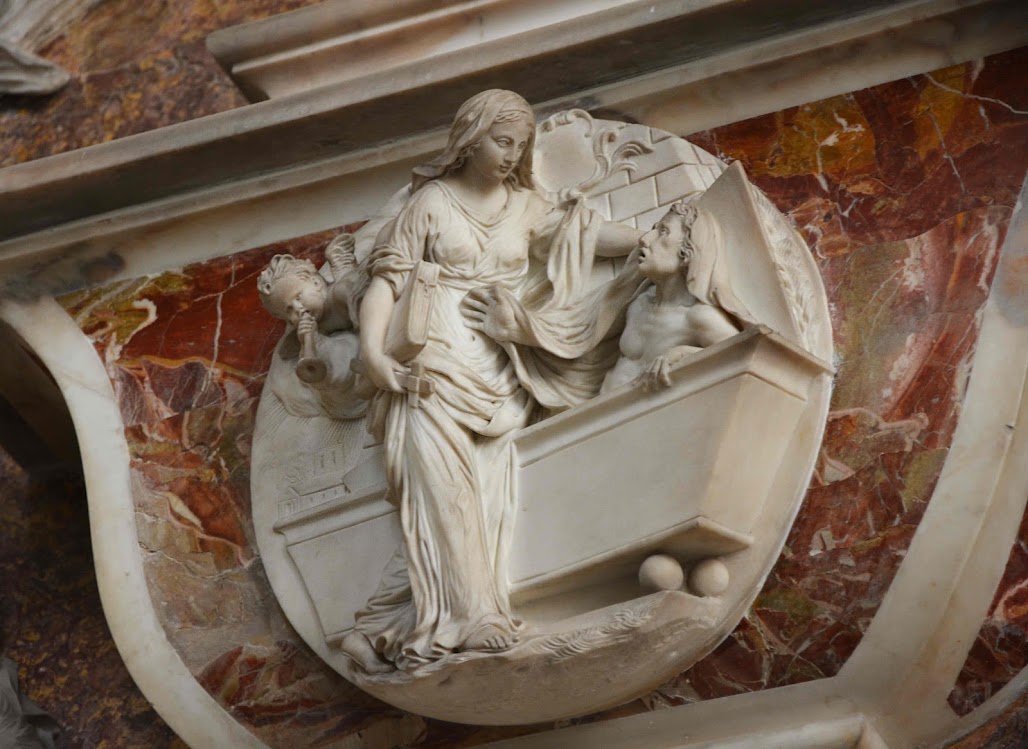



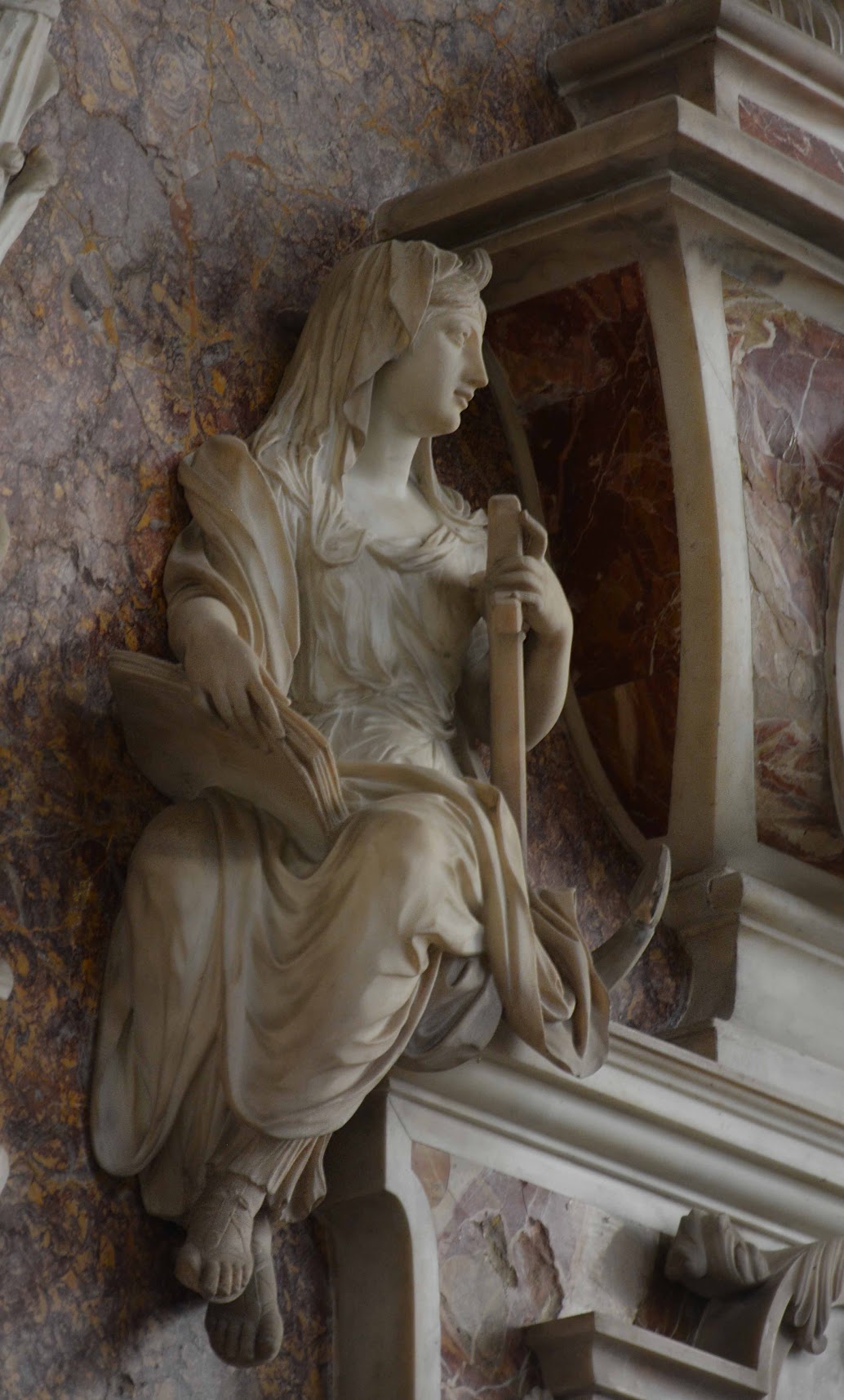




























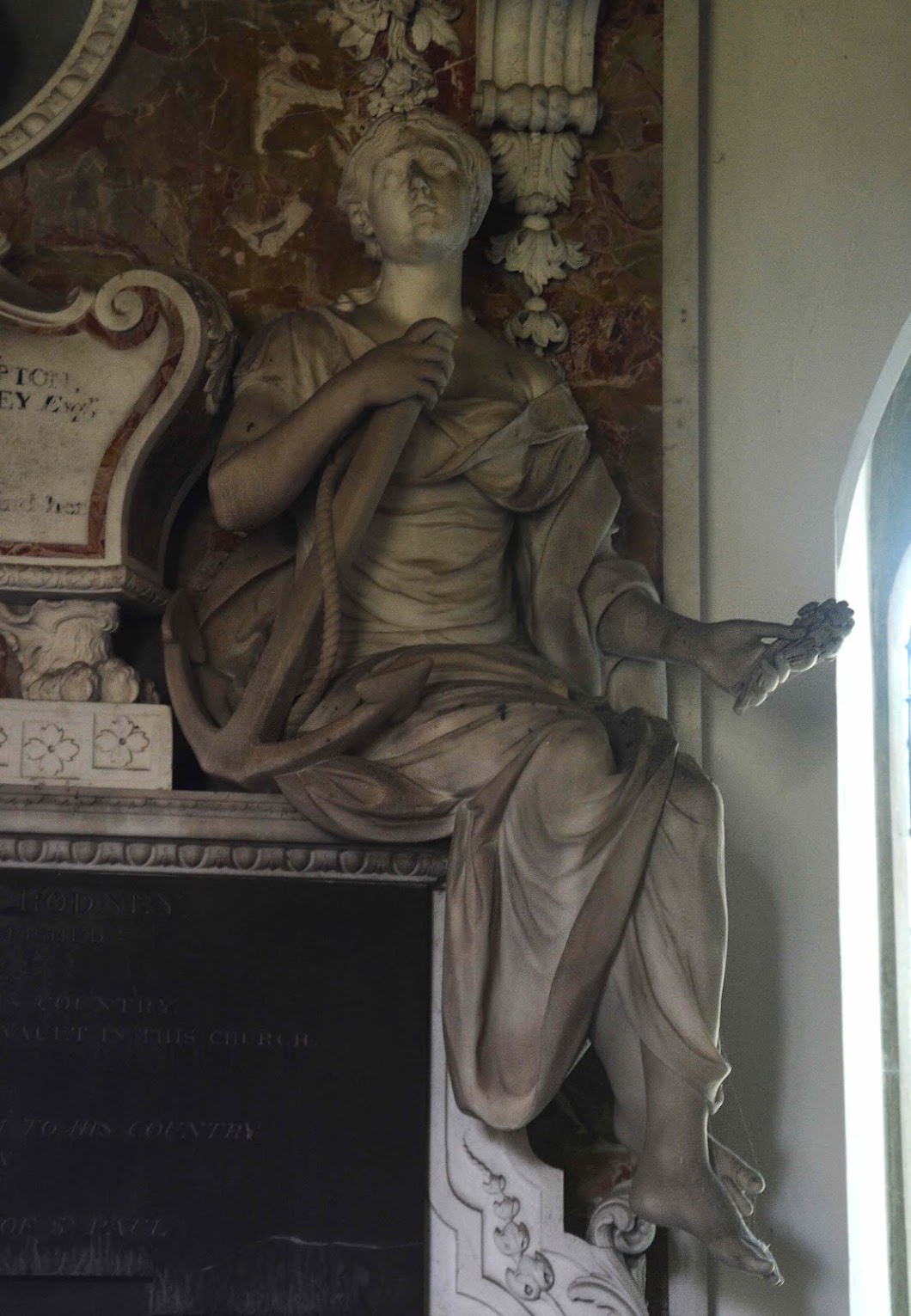










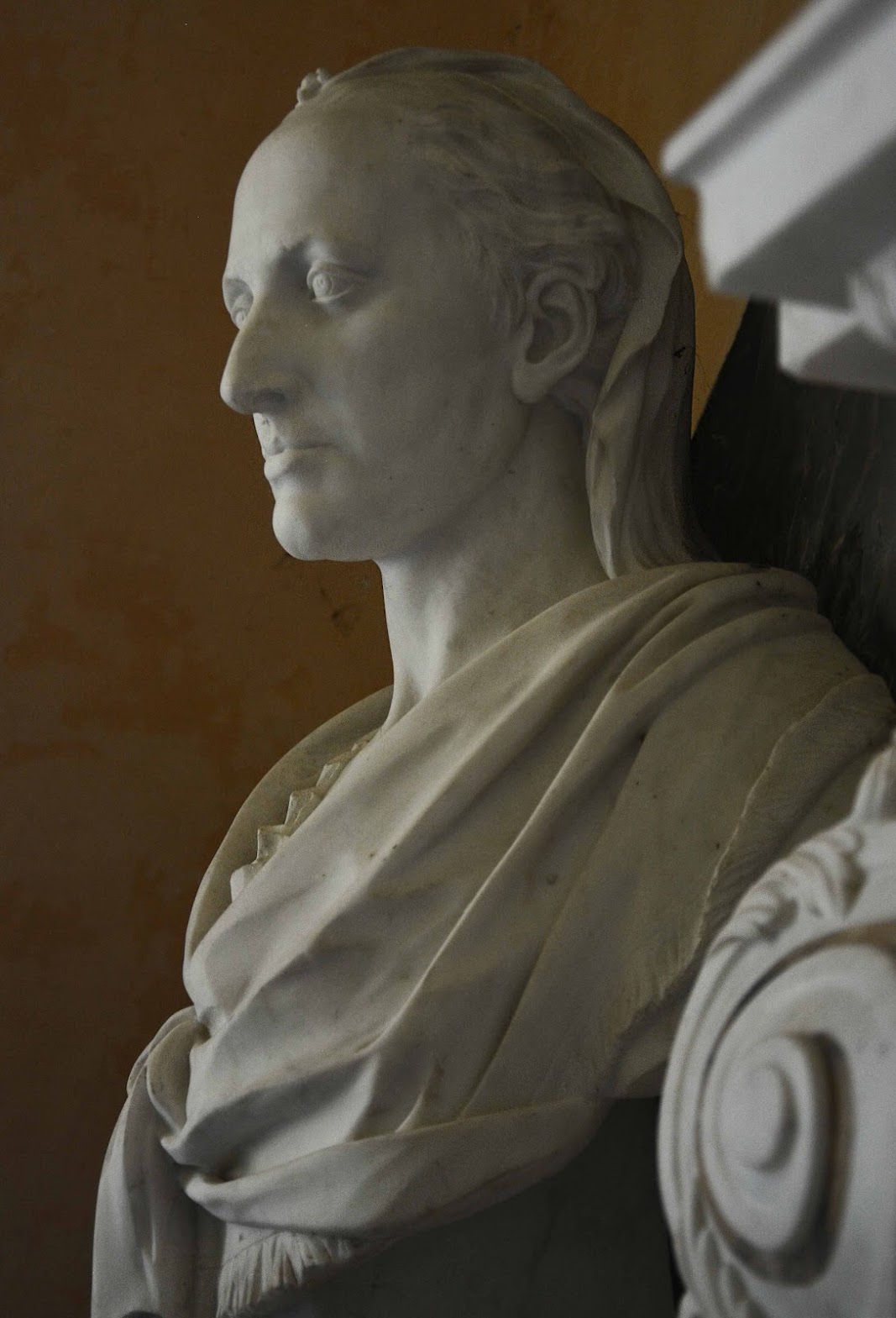






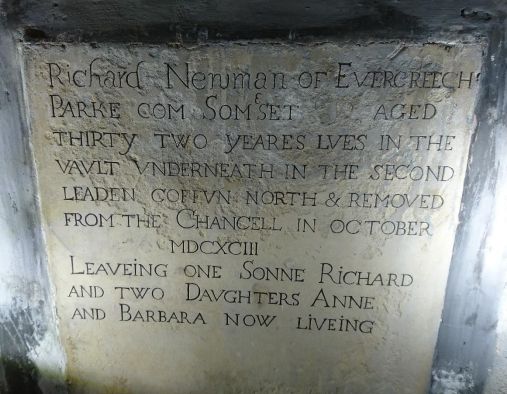
No comments:
Post a Comment